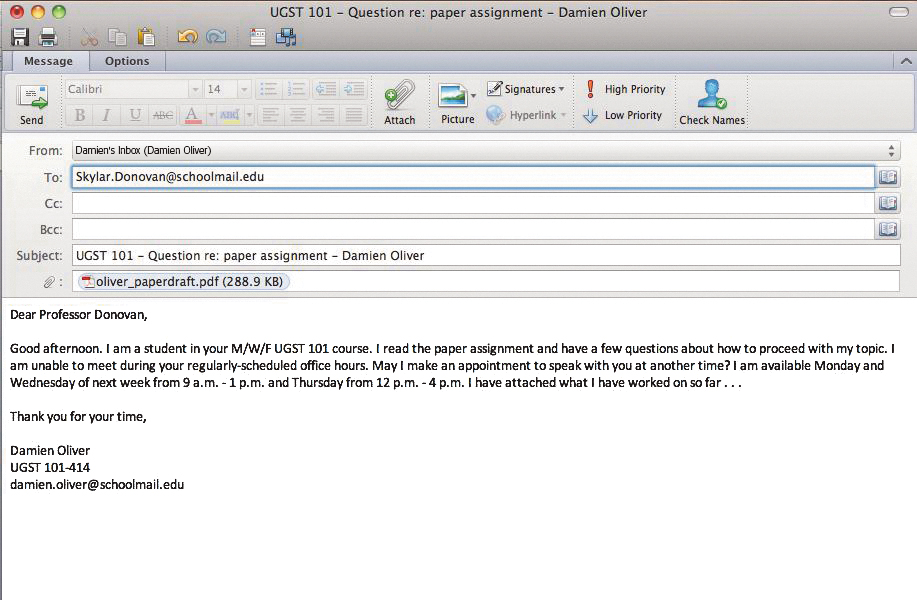techtip: E-MAIL WITH STYLE
E-MAIL WITH STYLE
As you planned for college, you probably heard about all the ways you’ll use technology as a student. First, you need to activate your college e-mail as soon as possible to receive information regarding class cancellations, weather-related closings, student events, and other types of communication that your college or your instructors may send you. Many colleges require you to use your student e-mail account to send and receive official communications. It is a good idea to get in the habit of checking that account daily, or at least every other day.
Whether your class meets online or face-to-face, at some point you will need to communicate with your instructor via e-mail. Although you may prefer to use Facebook or Twitter, be sure to use e-mail to communicate with your instructors unless they tell you otherwise. Writing e-mails to your instructors is different from writing e-mails or sending texts to your friends.
The Problem
You need help with an assignment or you have a question about the syllabus and have to send your professor an e-mail, but you’ve never sent an e-mail to any kind of teacher before.

The Fix
Take a few minutes to figure out what exactly you need to ask, jot down your main points, and then construct a clear and concise e-mail.
How to Do It
Look at the example shown here and follow its format in your e-mail.
It’s best to use your college e-mail address because it has your name and your college’s e-mail address, which will help your professor immediately recognize that your message has been sent by a student. If you have to use another e-mail address, use a professional, simple address that includes your name.
- Make the subject line informative. Your instructor might receive hundreds of e-mails every day, and a relevant subject like the name of the course or the assignment will help him or her respond to your e-mail promptly. A subject line like “Class” or “Question” isn’t helpful; a blank subject line usually goes to the instructor’s spam folder.
- Address your instructor with respect. Think about how you address your instructor in class, or look at your syllabus to see his or her proper title. If an instructor uses Doctor, then you should use Doctor. If you don’t know your instructor’s title, you can never go wrong with Dear Professor, plus your instructor’s last name.
- Sign every e-mail with your full name, course number, and e-mail address.
- When attaching files to your e-mail (a skill you should have), use widely accepted file formats like .doc, .docx, or .pdf. Also, be sure your last name is included in the file name. See the example shown.
EXTRA STYLE POINTS: Set your college e-mail to feed into your phone, tablet, or regular online account. Tie it into your regular e-mail, like Google or Outlook. Most of these services can be configured so that you can receive e-mail from multiple accounts. This way, you will have all of your e-mail in one place that you’re sure to check.
*Note If you want to cut back on e-mails from Web sites that you visit, use a free service like UnRollMe (https://unroll.me) that condenses the blanket e-mails you get, but allows you to read them when you have time. You can list your instructors as “favorites” so you don’t miss their e-mails.